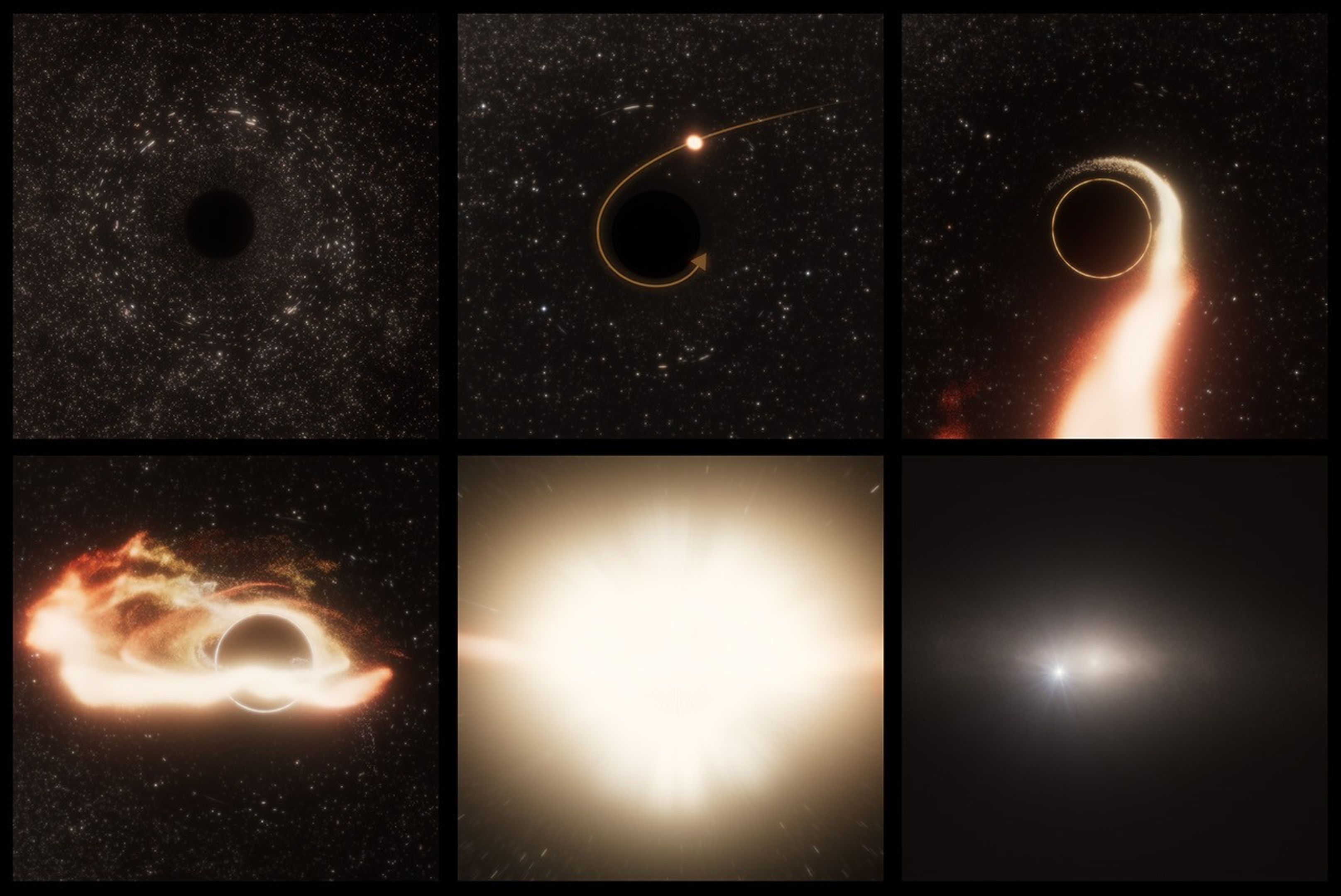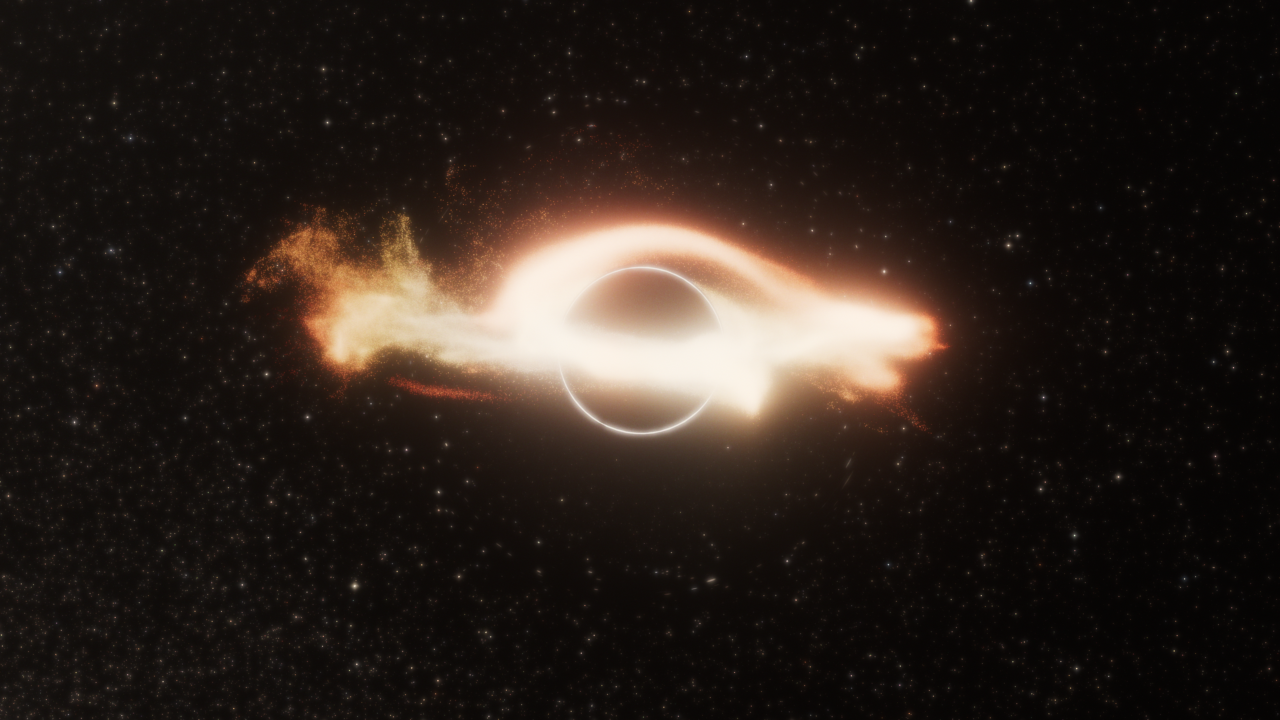1 min read
Black Hole TDE AT2024tvd (Hubble + Chandra)

This is a combined Hubble Space Telescope/Chandra X-Ray Observatory image of galaxy located 600 million light-years away that is host to the telltale signature of a roaming supermassive black hole. Visible in the Hubble image is a tidal disruption event (TDE), an intense flash of radiation caused by the supermassive black hole eating a star. The TDE appears as an isolated blue-white point source of ultraviolet light, while the galaxy is colored orange in visible light. In addition, X-ray light is captured by Chandra as a blue haze that surrounds the TDE. Both Hubble and Chandra observations were combined to pinpoint the TDE's location, which is offset from the center of the galaxy, which appears as a bright orange-white blob.
About the Object
- R.A. PositionR.A. PositionRight ascension – analogous to longitude – is one component of an object's position.17:10:42.58
- Dec. PositionDec. PositionDeclination – analogous to latitude – is one component of an object's position.+28:50:15.13
- ConstellationConstellationOne of 88 recognized regions of the celestial sphere in which the object appears.Hercules
- DistanceDistanceThe physical distance from Earth to the astronomical object. Distances within our solar system are usually measured in Astronomical Units (AU). Distances between stars are usually measured in light-years. Interstellar distances can also be measured in parsecs.About 600 million light-years
- DimensionsDimensionsThe physical size of the object or the apparent angle it subtends on the sky.The image is about 25 arcseconds across (about 73,000 light-years)
About the Data
- Data DescriptionData DescriptionProposal: A description of the observations, their scientific justification, and the links to the data available in the science archive.
Science Team: The astronomers who planned the observations and analyzed the data. "PI" refers to the Principal Investigator.The Hubble observations include those from program 17894 (Y. Yao). This image also includes data from the Chandra X-ray Observatory Observation ID 30620 (Y. Yao).
- InstrumentInstrumentThe science instrument used to produce the data.Hubble: WFC3/UVIS; Chandra: ACIS-S
- Exposure DatesExposure DatesThe date(s) that the telescope made its observations and the total exposure time.Hubble: 16 January 2025; Chandra: 19 November 2024
- FiltersFiltersThe camera filters that were used in the science observations.Hubble: F275W, F625W; Chandra: N/A
- Object NameObject NameA name or catalog number that astronomers use to identify an astronomical object.AT2024tvd
- Object DescriptionObject DescriptionThe type of astronomical object.Black Hole Tidal Disruption Event
- Release DateMay 8, 2025
- Science ReleaseNASA’s Hubble Pinpoints Roaming Massive Black Hole
- CreditScience: NASA, ESA, STScI, Yuhan Yao (UC Berkeley); Image Processing: Joseph DePasquale (STScI)

These images were acquired by the WFC3 Instrument on the Hubble Space Telescope and the ACIS instrument on the Chandra X-ray Observatory. The color results from assigning different hues (colors) to a monochromatic (grayscale) image. In this case, the assigned colors are: Blue: X-ray, Cyan: F275W, Orange: F625W

Related Images & Videos
Share
Details
Claire Andreoli
NASA’s Goddard Space Flight Center
Greenbelt, Maryland
claire.andreoli@nasa.gov



































